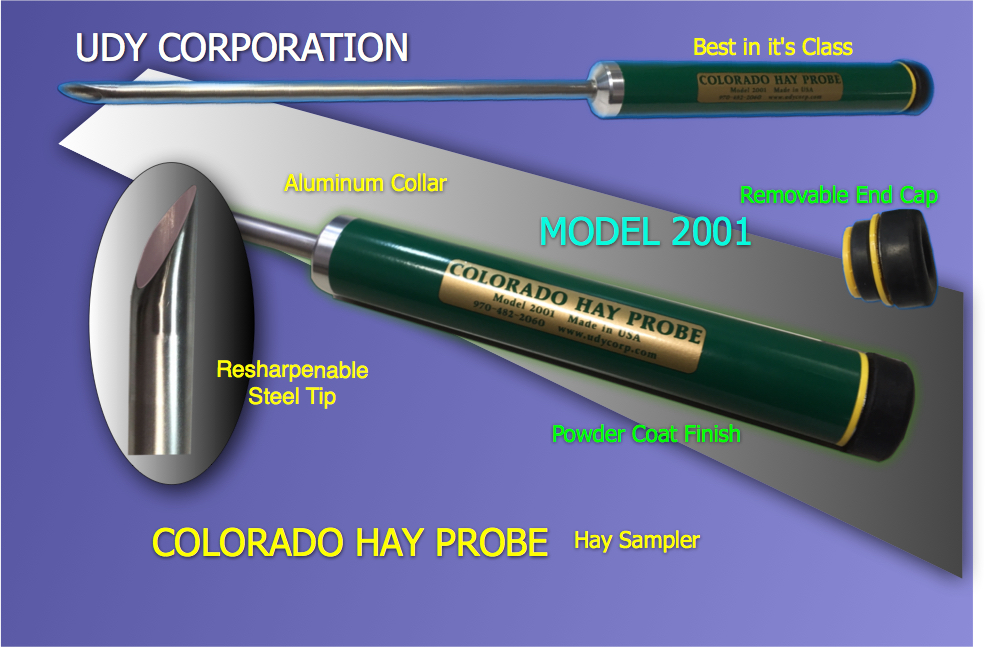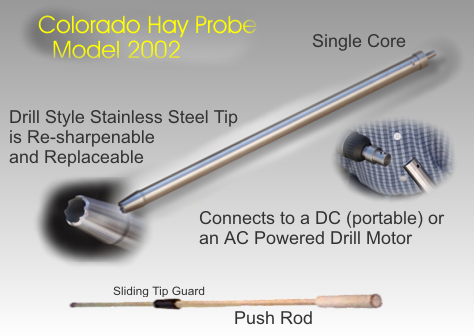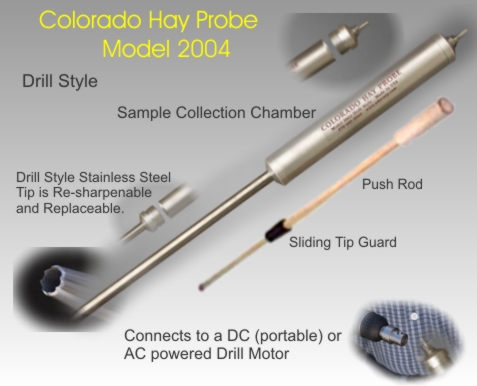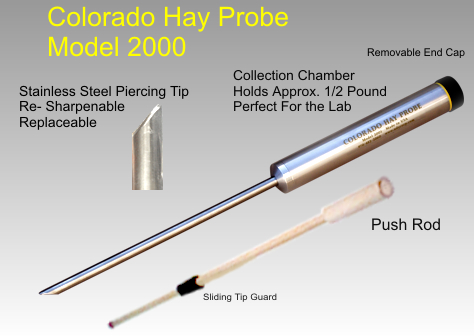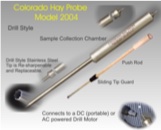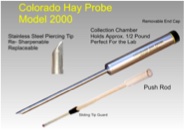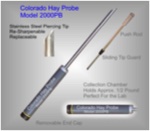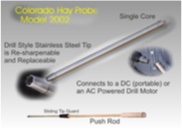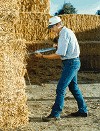Good Sampling
Methods Improve Hay Test Accuracy
by Dan
Putnam and Steve Orloff, University of California
Cooperative Extension |
| Hay sampling is
probably the most important aspect of forage quality
testing. Take a few moments to review these sampling
methods. They are a critical component of accurate hay
quality analysis. |
| What we are
attempting to do with hay sampling is a little
preposterous. Think for a moment about the process: A
pinky-sized ground-up sample weighing less than 1 gram
must represent tons and tons of alfalfa hay from the
field. This 1 gram is sub-sampled from about a half-pound
of material given to the lab by the sampler. It is
especially critical, therefore, that the sample given to
the lab accurately represents the hay being tested.
Whether the sample accurately represents a stack is the
responsibility of the sampler alone. The lab can only
test the sample presented to them! |
| The protein and
fiber of leaves and stems are very different. The sample
must fairly represent the leaf/stem ration of the bales,
as well as the weed composition of the hay, which varies
considerably across the field. The protocols given below
will aid the sampler in obtaining a fair representative
sample of the hay lot. |
| Many disputes about
hay testing results can be attributed to differences in
sampling methods. When these sampling protocol are
followed closely, different samplers can usually repeat
the lab measurements within a reasonable range. |
| The principle of hay
sampling is to obtain a randomly-chosen sample which
represents the average composition of the hay stack.
Never present an un-cored sample to a lab (e.g. a flake),
or a small handful of forage. These protocols are fairly
universal, but there are slight variations
recommendations from region to region. Here are some
important steps and guidelines for taking samples of
alfalfa hay: |
| |
| 1. Identify
a single lot of hay. Lots must be from the same
cutting, variety, field, stage of maturity and harvested
within 48 hours. Do not mix lots. A lot must not exceed
150-200 tons. If you have known sources of differences in
quality, separate into different lots. |
| 2. Choose a
good, sharp coring device. The coring device should
have an inside diameter of the cutting edge at least 3/8
inch and no more than 5/8 inch. The cutting edge should
be at right angles to the shaft, and kept sharp. Dull
probes will cause material to be pushed out of the core.
Do not use an open auger or corkscrew type device, which
selectively samples leaf or stem parts. |
| 3. Sample
at random. Walk around the entire stack and sample
bales at various heights, to the best of your ability. Do
not avoid some bales or choose others; sample at random.
Try to obtain cores from as broad a group of bales as
possible within the stack. |
| 4. Take
enough cores. Per lot, sample a minimum of 20 bales
(one core per bale). Take more cores (20-40) in larger
lots or if the hay is very variable. |
| 5. Use good
technique. Probe the ends of bales near the center,
and at least 12-18 inches into the bale. Probe should be
at right angles to the bale end. Do not slant the probe,
or sample from the sides. |
| 6. Handle
samples correctly. Combine cored samples into a
single sample and store them in a sealed polyethylene
freezer bag. Do not expose to heat or direct sun, and
send to the lab quickly. Moisture estimates are
particularly prone to changes in the sample before the
lab gets it. |
| 7. Not too
big, not too small. The sample should weigh about ½
lb. (220 grams). If you obtain greater than this amount,
your probe may be too large in diameter; many labs will
not grind a large sample, which defeats the purpose of
careful sampling. Too small a sample will not represent
the hay lot. |
| 8. Split
samples correctly. If you want to test the
performance of a lab, send a fully ground and mixed
sample to another lab, never split an unground sample.
Reputable labs will return your ground sample for further
testing, if you wish (you should reject labs who are
unwilling to do this). |
| |
| Research has shown that if these simple guidelines are followed,
reliable results can be obtained, even using different
probes or people. However, a minimum of +/-0.5% variation
in results is normal and should be expected due to normal
variation in the sample and normal variation in lab
practices.
|
| 1998 California Alfalfa & Forage Review |
 |


